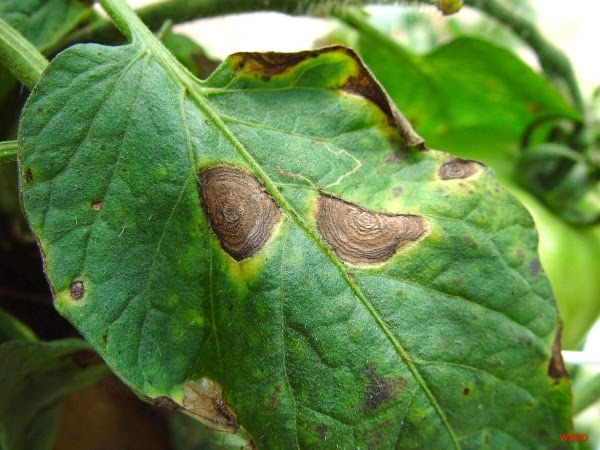
Target Spot
Target spot, or early blight is one of the most common diseases attacking leaves and stems of potatoes and tomato. The disease is caused by the fungus Alternaria solani. On the leaves the disease starts as small circular to oval dark brown to black spots. These spots enlarge, becoming oval to angular, and are normally confined within the main veins of the leaflets. They are up to 6 mm in diameter. Under very favourable conditions individual spots can grow to 10-12 mm. They become leathery looking, and the development of close concentric rings within each spot gives the disease its name, target spot. When the disease is severe, spots can unite and cause an upward rolling of the leaf tips and death of leaves. Spots that develop on stems are more elongated than those on the leaves. Target spot can sometimes infect the tubers. It appears as small dark, slightly sunken, circular to irregular-shaped lesions (10 to 20 mm in diameter), with slightly raised margins. A brownish, corky dry rot up to 6 mm deep develops in the tissue beneath the lesion. Affected tubers are prone to attack from other soil fungi which can cause complete rotting of the tuber.
